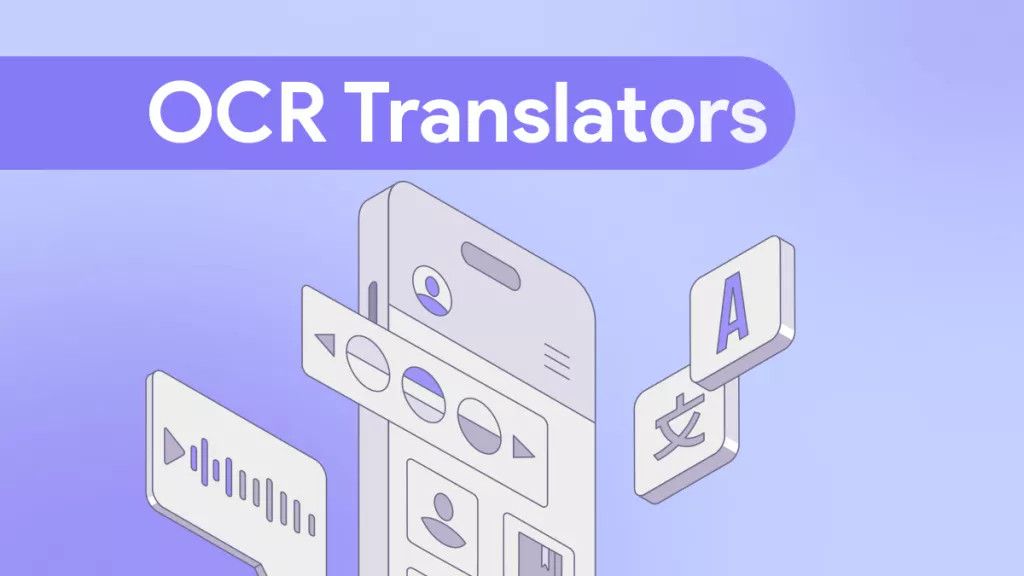Imagine receiving an image or scanned PDF in a different language. To make the content to use, you need to extract the text and translate it to your preferred language. That's where the OCR translator comes to the rescue.
In this guide, we will clarify the basics of OCR translator and then present the top four OCR translators to consider with detailed steps to follow.
Part 1. What Is an OCR Translator?
An OCR translator is software that uses optical character recognition (OCR) technology to extract text from images or scanned documents and translate it into another language.
For example, if you have a printed contract in French, you can capture an image and then use an OCR translator to extract and translate the text to English or your preferred language.
The key steps in this process involve:
- Uploading the image or a scanned PDF.
- Using OCR to scan, recognize, and extract the text.
- Translate the extracted text into the desired language.
The effectiveness of the OCR and translation depends on which OCR translator tool you choose. Head to the next part to learn about the four best software solutions for accurate translations.
Part 2. Top 4 OCR Translators That Provide Accurate Translation
There are dozens of OCR tools that can help extract and translate text, but only a handful of tools can perform accurate OCR and translation. Below, we have shortlisted the four best OCR translators worth trying in 2025:
1. UPDF
UPDF is the most advanced AI OCR translator of 2025. It offers an AI-powered OCR to intelligently extract text from scanned documents and images. Afterward, its AI assistant lets you translate the extracted text into your preferred language.
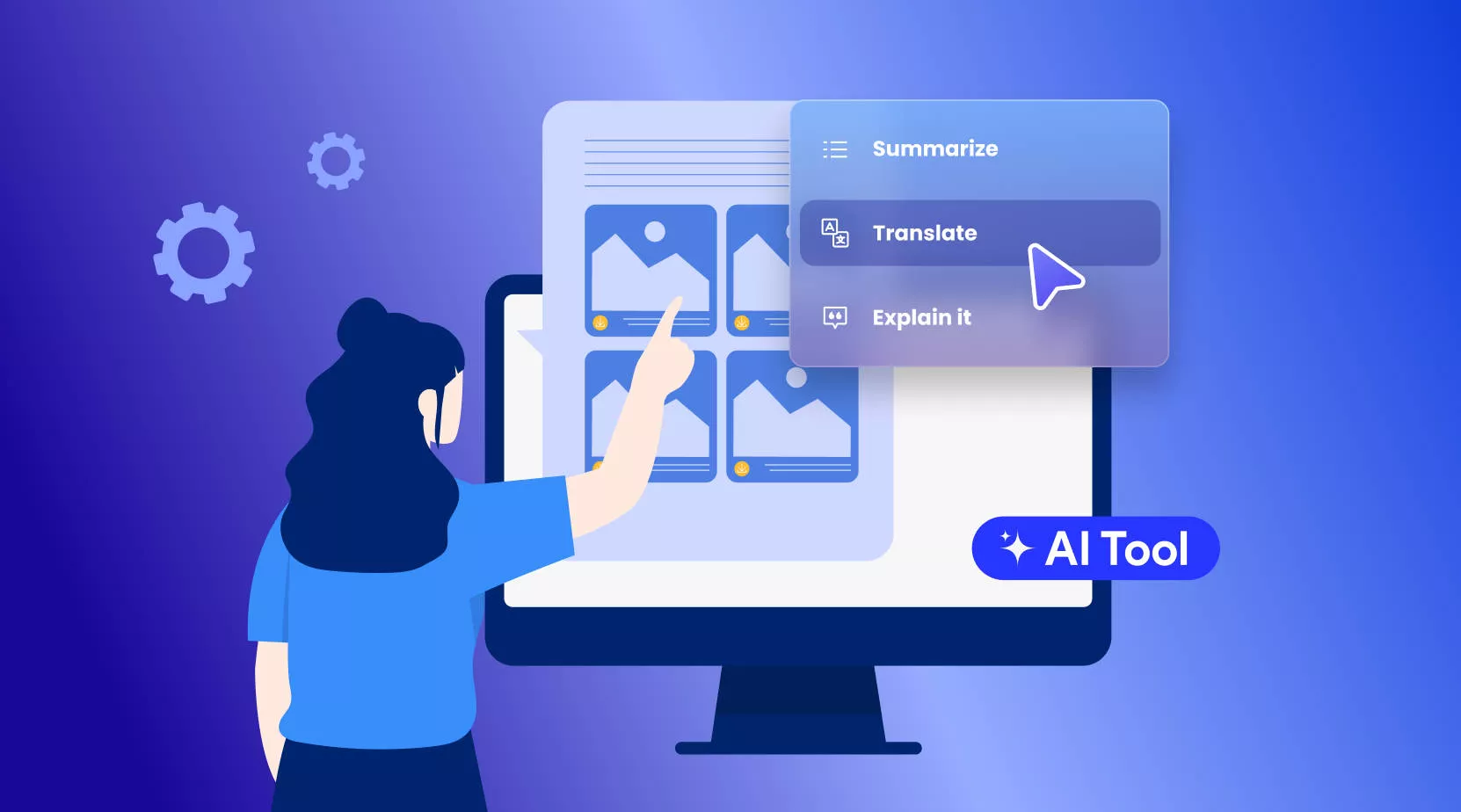
UPDF is designed to offer convenience and access to the most advanced technology. When you want to translate a scanned PDF, UPDF requires you to simply specify the language to translate and the page range. Afterward, it generates a new PDF that includes the translated text while preserving the original formatting.
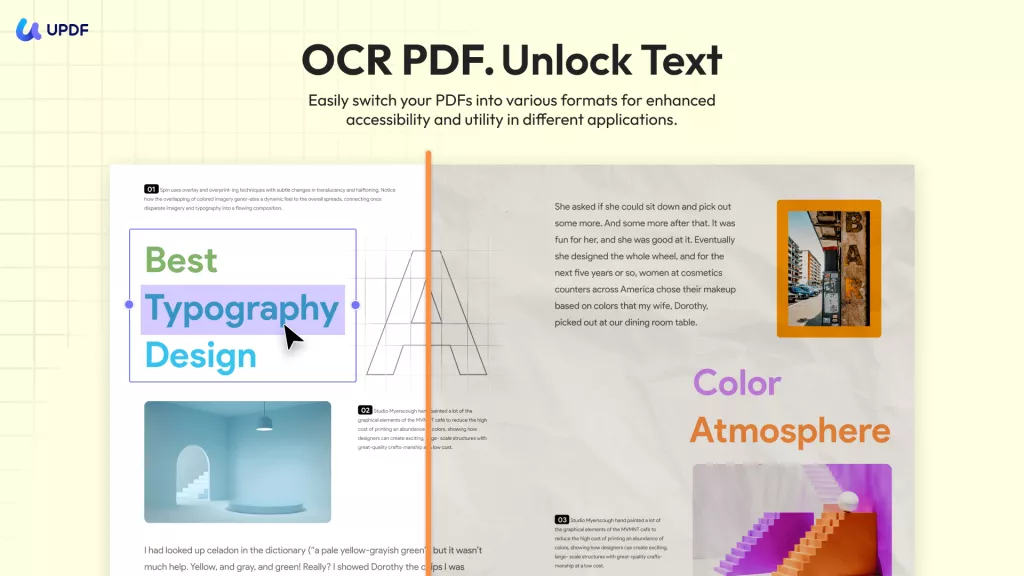
Similarly, you can use UPDF's AI assistant to easily translate text on images using its chat mode. Moreover, you can also use the chat box to ask further questions about the image, such as explaining the image content, generating ad content about the image topic, etc.
Key Benefits
- Easy-to-use click-based interface with zero learning curve.
- AI-backed OCR + translation for high accuracy.
- Translate images and scanned documents without size limit.
- Preserve original formatting while converting scanned PDFs to editable and translated PDFs.
- Highest text extraction and translation rate, no matter the image quality.
- Dedicated apps for Windows, macOS, iOS, and Android. The AI assistant is also available online.
- Chat with an image or PDF with an AI assistant.
- Access to other PDF-related features, such as edit, annotate, convert, organize, and protect PDFs.
- Perform OCR on both PC (Mac&Win) and Mobile (Android&iOS)
Impressed with the exceptional capabilities of UPDF? Try out UPDF and its AI assistant for free and perform OCR + translation right away.
Windows • macOS • iOS • Android 100% secure
Option 1. Steps to Translate Scanned Documents (Mac & Win)
Step 1. Install and launch UPDF on your computer (Windows/Mac). Drag and drop your scanned PDF or click "Open File" to select the PDF.
Step 2. navigate to the Tools option at the top left side of your screen. Now, from the Tools menu, choose the OCR option to start the process. If you are the first time to use UPDF OCR, it will pop up a window to install the OCR.
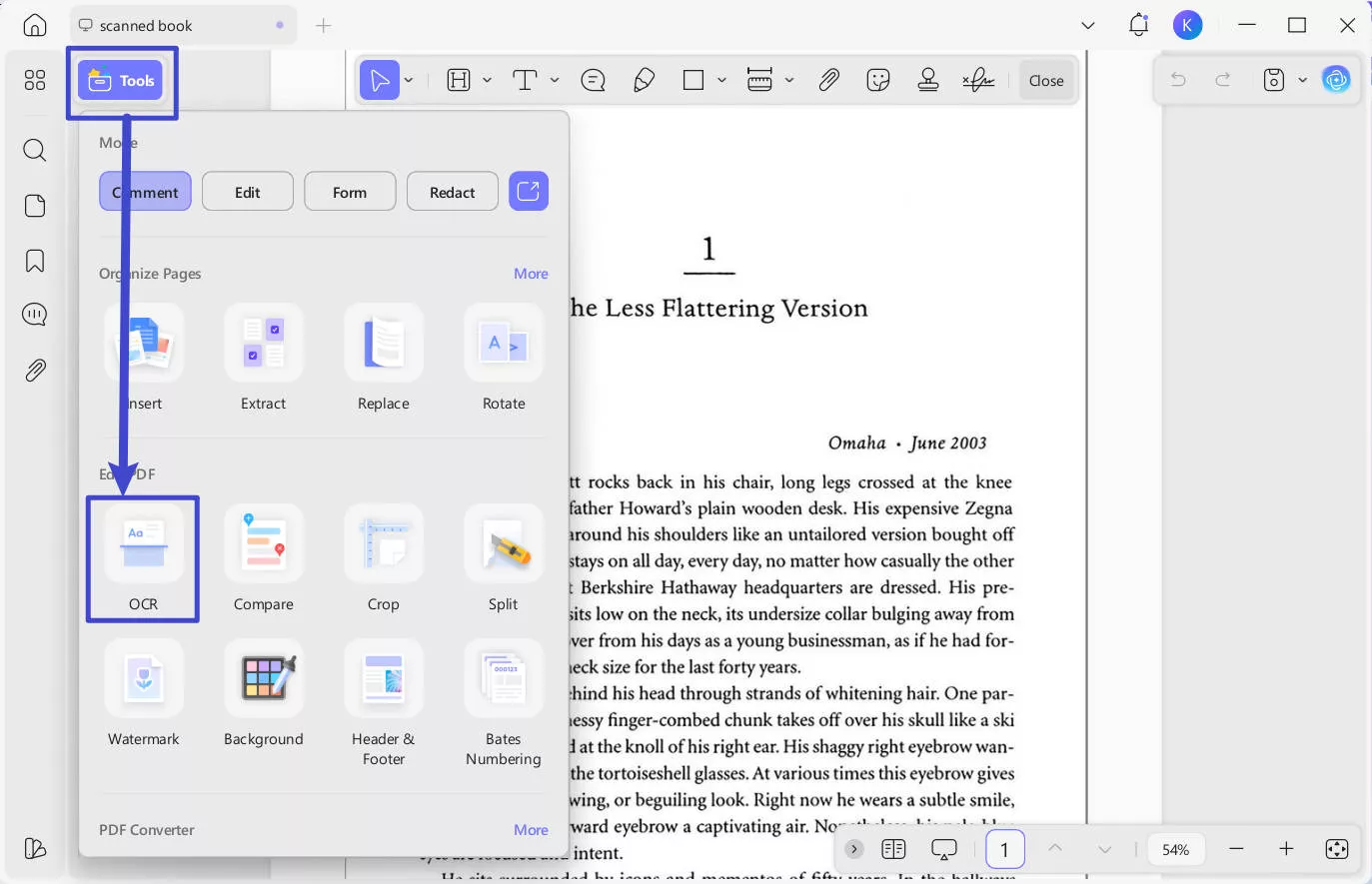
Step 3. UPDF OCR provide you with 3 different options of Document Type, which include Editable PDF, Text and Picture Only, and Searchable PDF Only.
- Editable PDF: This mode preserves the background images and illustrations from the original document and places the
recognized text on top. As a result, the file size is usually larger than those created with the "Text and Pictures Only" mode. Visually, the output may look slightly different from the original. - Text and pictures only: This mode saves the recognized text and images, resulting in a smaller PDF file. However, the
appearance may differ slightly from the original document. - Searchable PDF Only: In this mode, the page image is preserved, and the recognized text is added in an invisible layer
beneath it. This keeps the document visually almost identical to the original.
Choose your desired mode based on your need. To achieve more accurate OCR results, you need to correctly select the language you want to recognize, such as English.
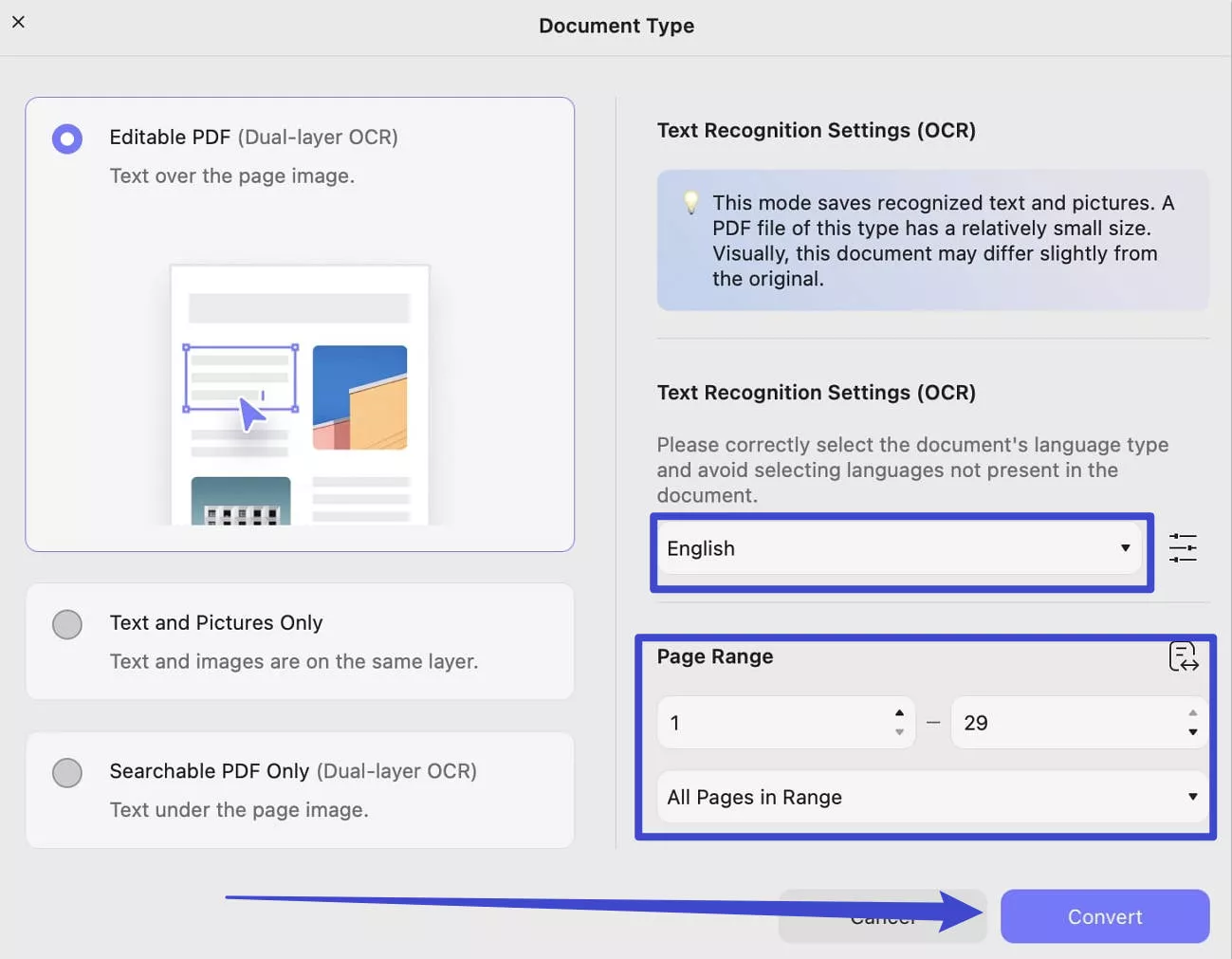
Step 4. When you finished setting, click on the Convert button to convert your scanned PDF into editable now. UPDF will automatically open the newly processed PDF, which is now editable. You can now proceed with translation by following the steps below.
Note:
Step 5. From the "UPDF AI" icon section, Click the "PDF Translation". Select the translation language, page range, translation output mode to translate. Once done, click "Translate".
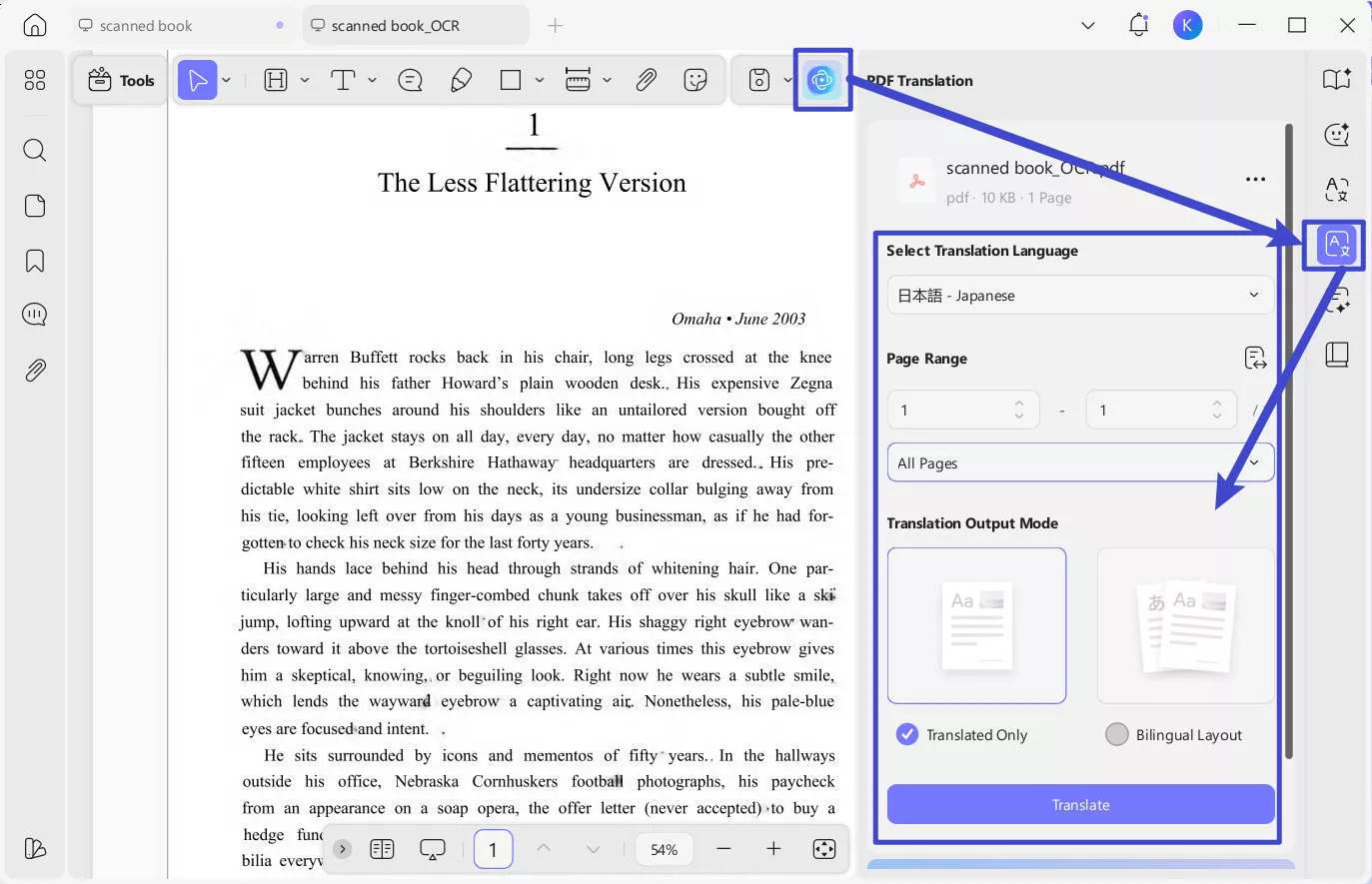
Within seconds, UPDF will generate a new PDF in your preferred language.
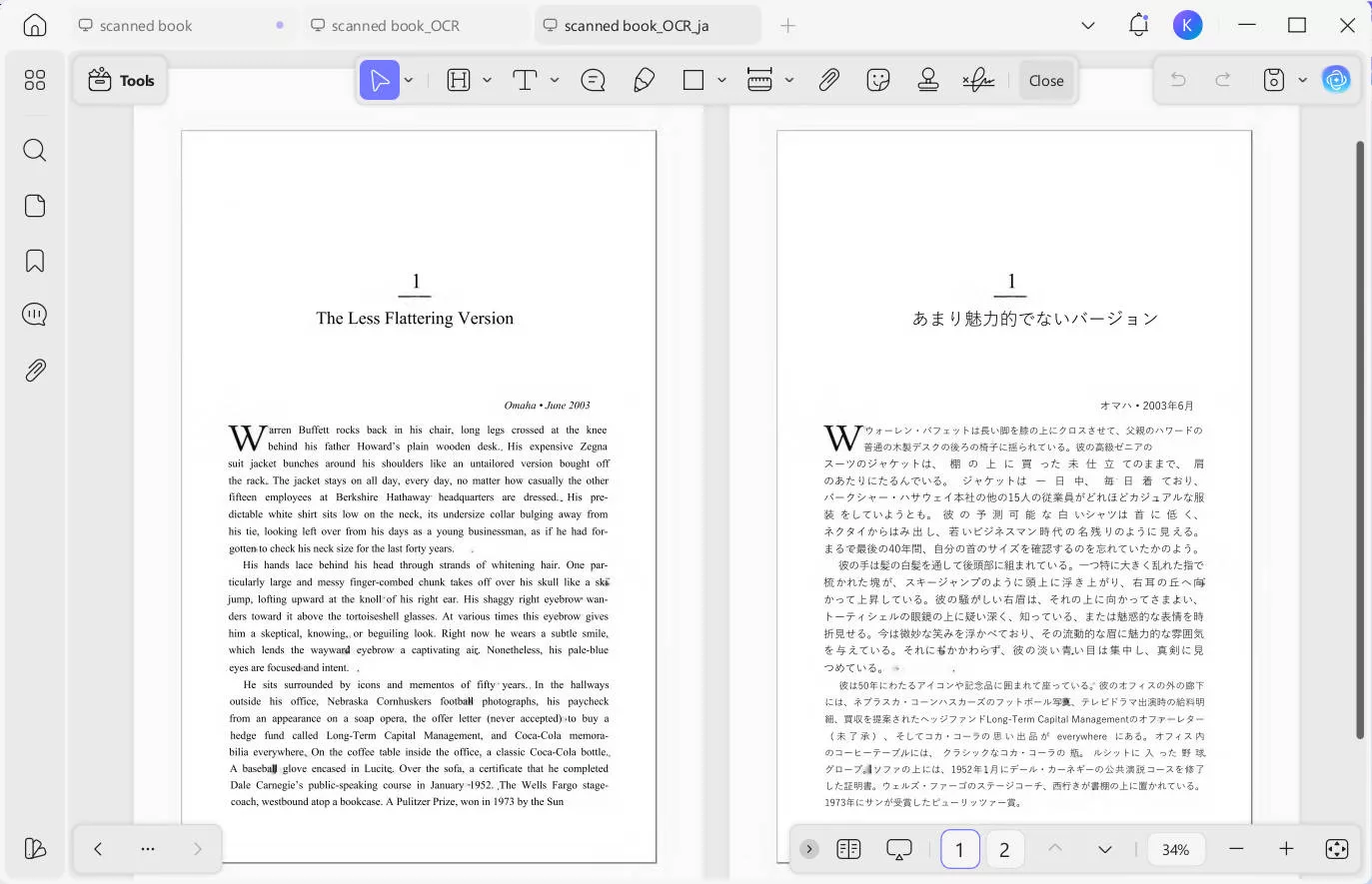
If you have multiple OCR-processed scanned documents that require translation (without further editing), try UPDF AI Online's Chat Project feature. You can instantly generate AI-powered translations for all selected documents while preserving their original formatting. This eliminates the need to save individual translated files separately in UPDF Desktop, saving both time and disk space.
To translate multiple files simultaneously, follow these steps:
Step 1. Go to UPDF AI Online Assistant or click the button below to access. In the left sidebar, click "New Project". Drag and drop your OCR-processed PDF files directly into the zone labeled "Click to upload or drag multiple files here" or click the "Upload Multiple Files" button to manually select files from your computer. After uploading all files, click "Start Chat with Project" to begin.

Step 2. UPDF AI automatically summarizes each document's content. If not needed, click the chat icon above to close. For document translation, click "Side-by-Side Translation" in the top toolbar and elect your desired target language.
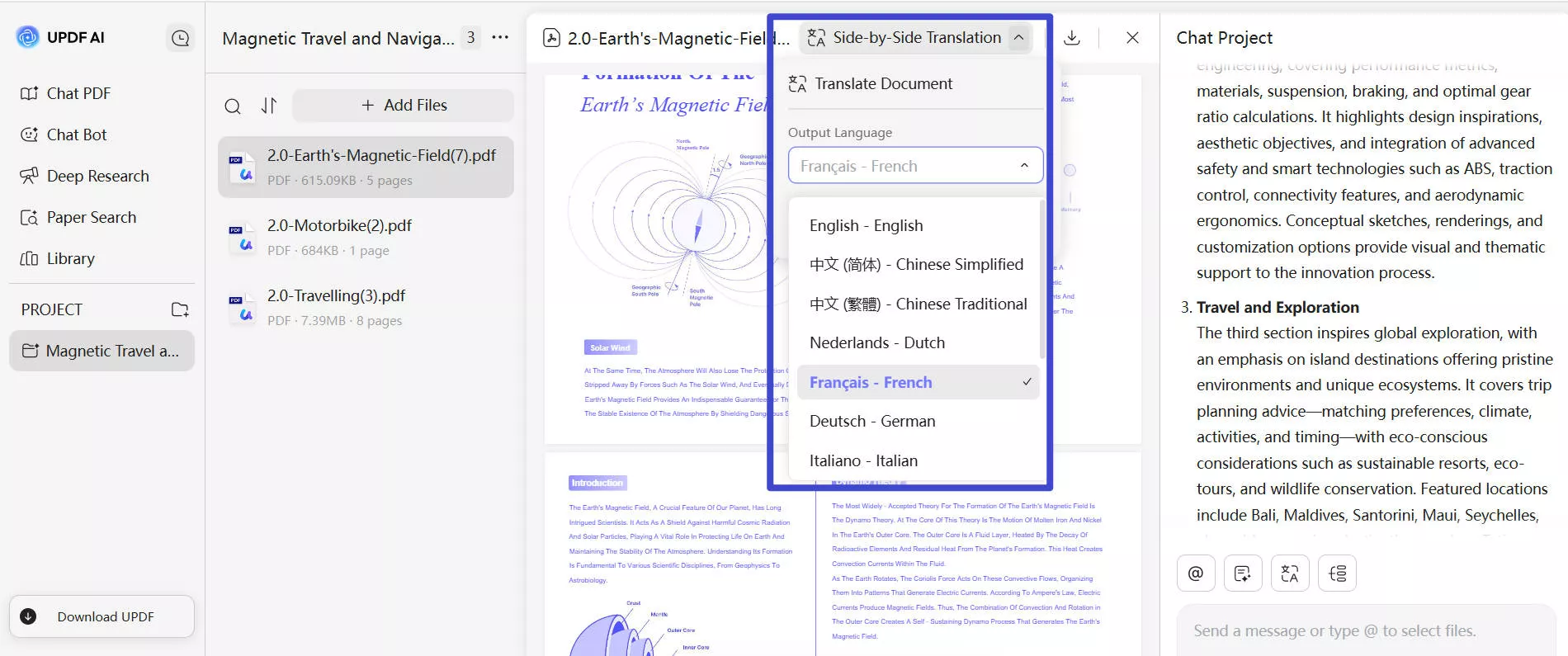
Step 3. You can select other files from the left panel to perform the same operation. UPDF AI preserves the original formatting largely while delivering the most accurate translation possible.
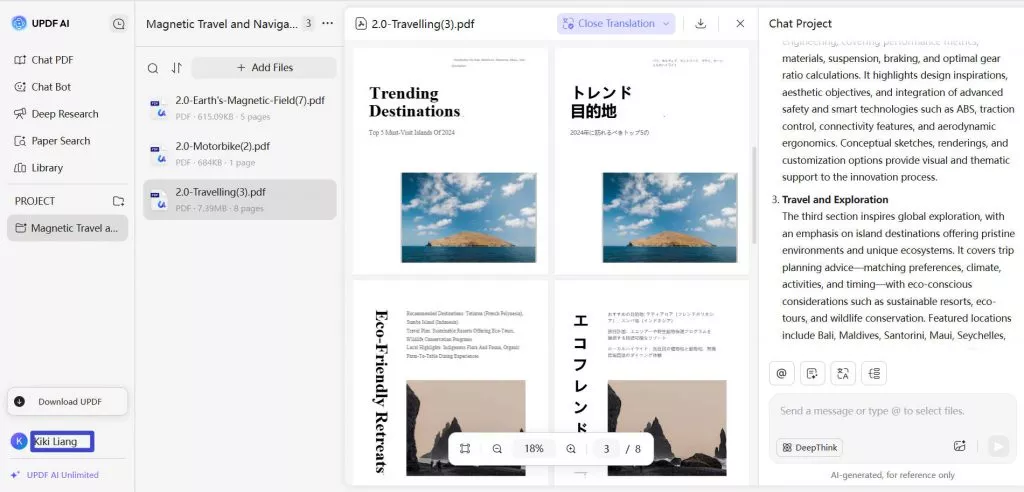
Option 2. Steps to Translate Scanned PDF or Images (Win& Mac)
Step 1. Launch UPDF and drag and drop the image to translate.
Step 2. Click the "UPDF AI" icon from the bottom right corner. Under the "Chat" mode, select the "Screenshot" icon.
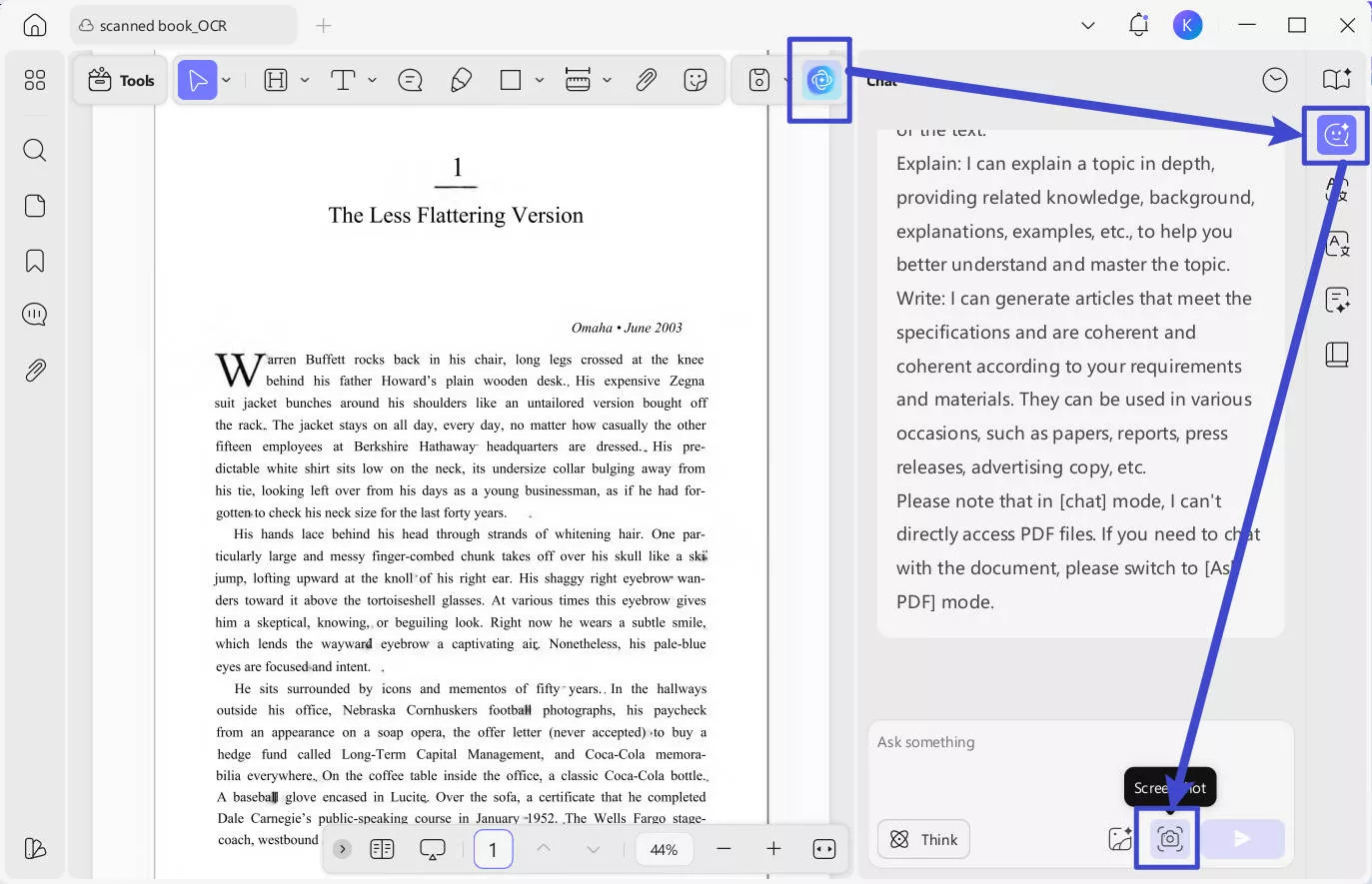
Step 3. Take a screenshot of the opened image and paste it into the chatbox. Enter the prompt "Extract the image text and translate it to [enter language name]".
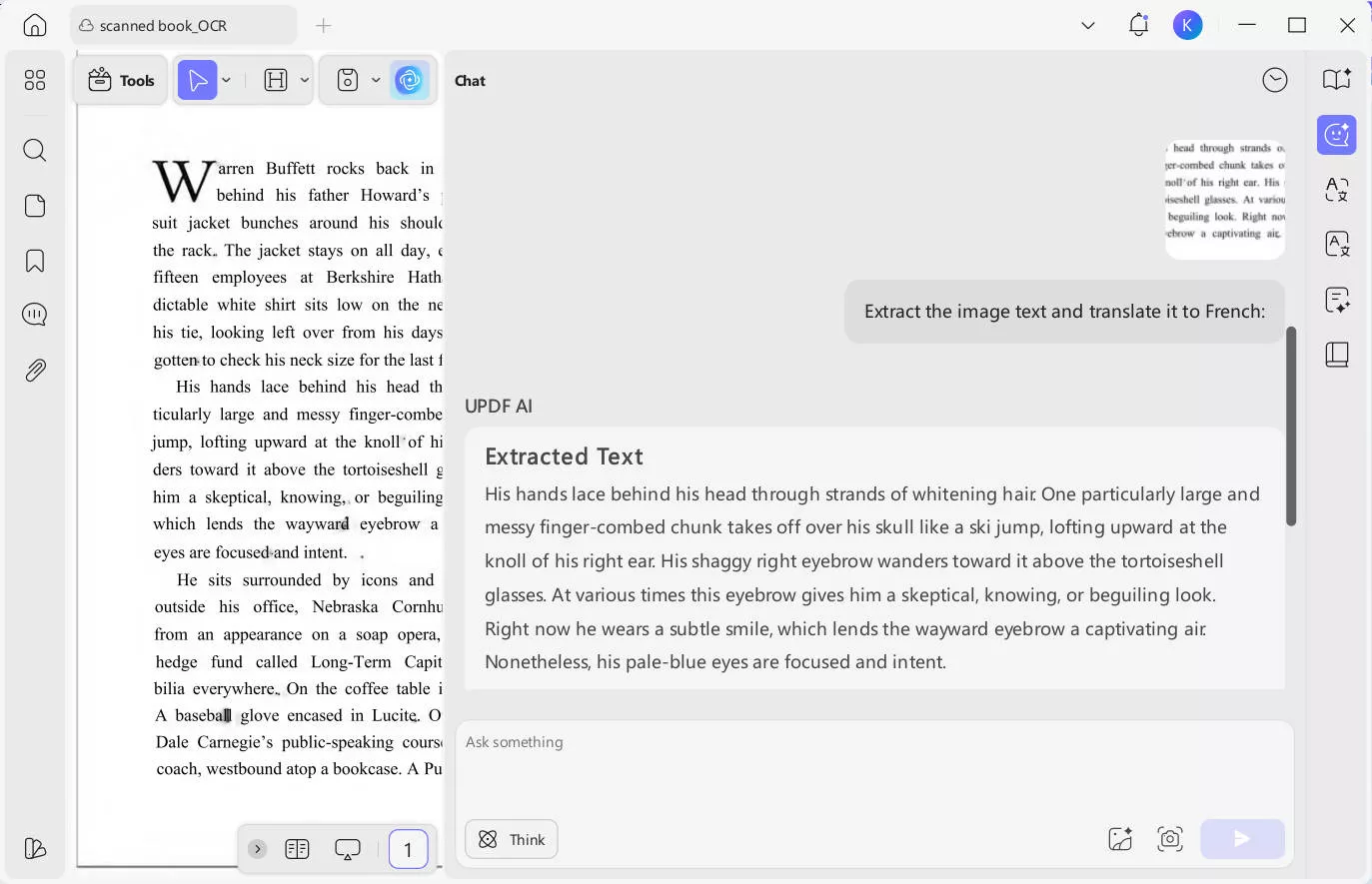
UPDF AI will intelligently extract the text from the image and translate it into your preferred language.
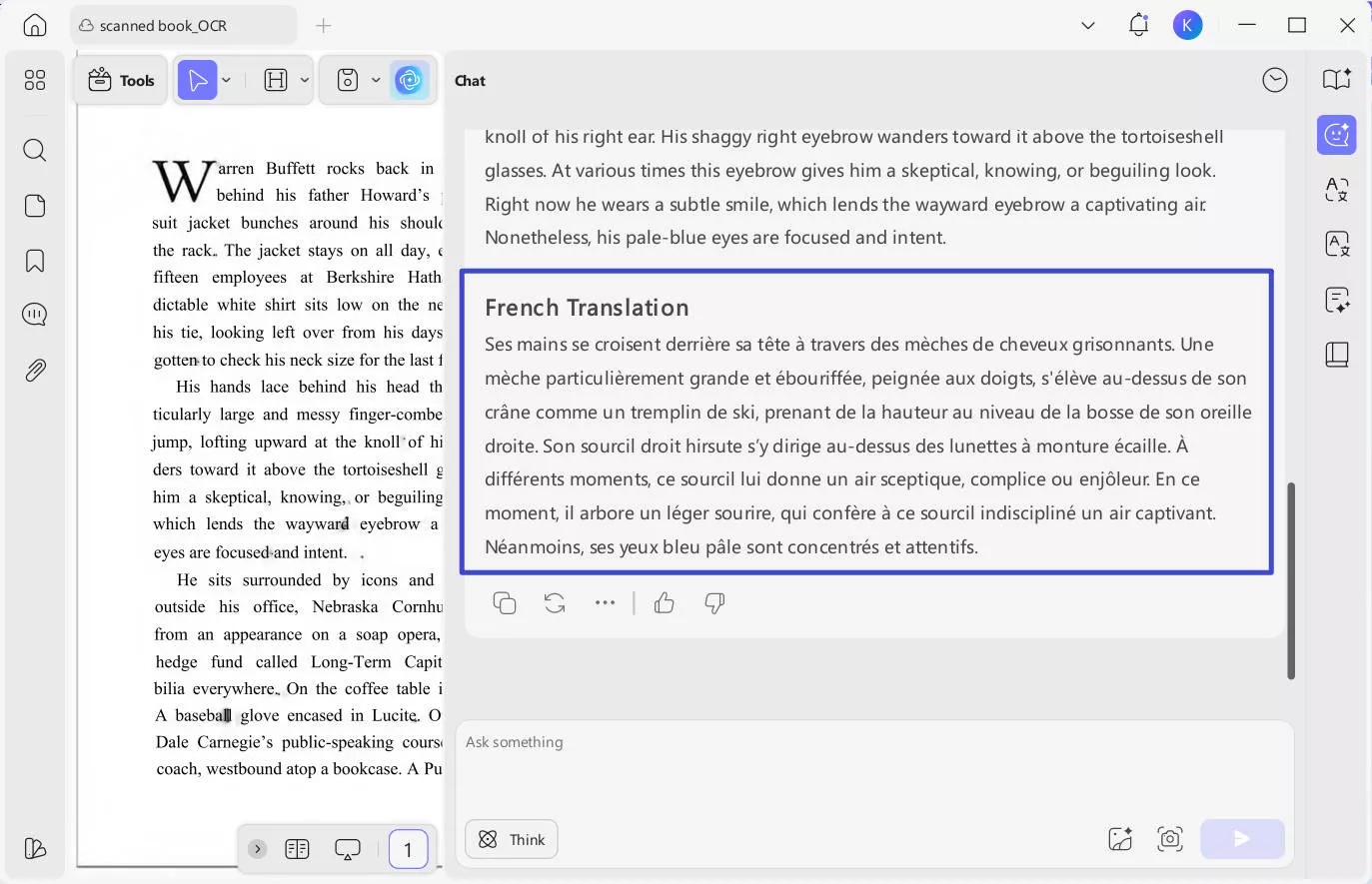
Option 3. Steps to Translate Scanned Documents (Android & iOS)
The mobile version of UPDF also supports OCR functionality. If you prefer not to use a computer, you can click the button below to download the UPDF mobile app and perform the operation directly on your phone. After the OCR is completed, you can select the text within the scanned document for translation. You can also download UPDF Mobile 2.0 from App Store and Google Play.
Windows • macOS • iOS • Android 100% secure
Follow the steps below:
Step 1. Open the UPDF app on your phone. Click the "+" icon from the bottom right corner and tap "Files" to select the scanned PDF.
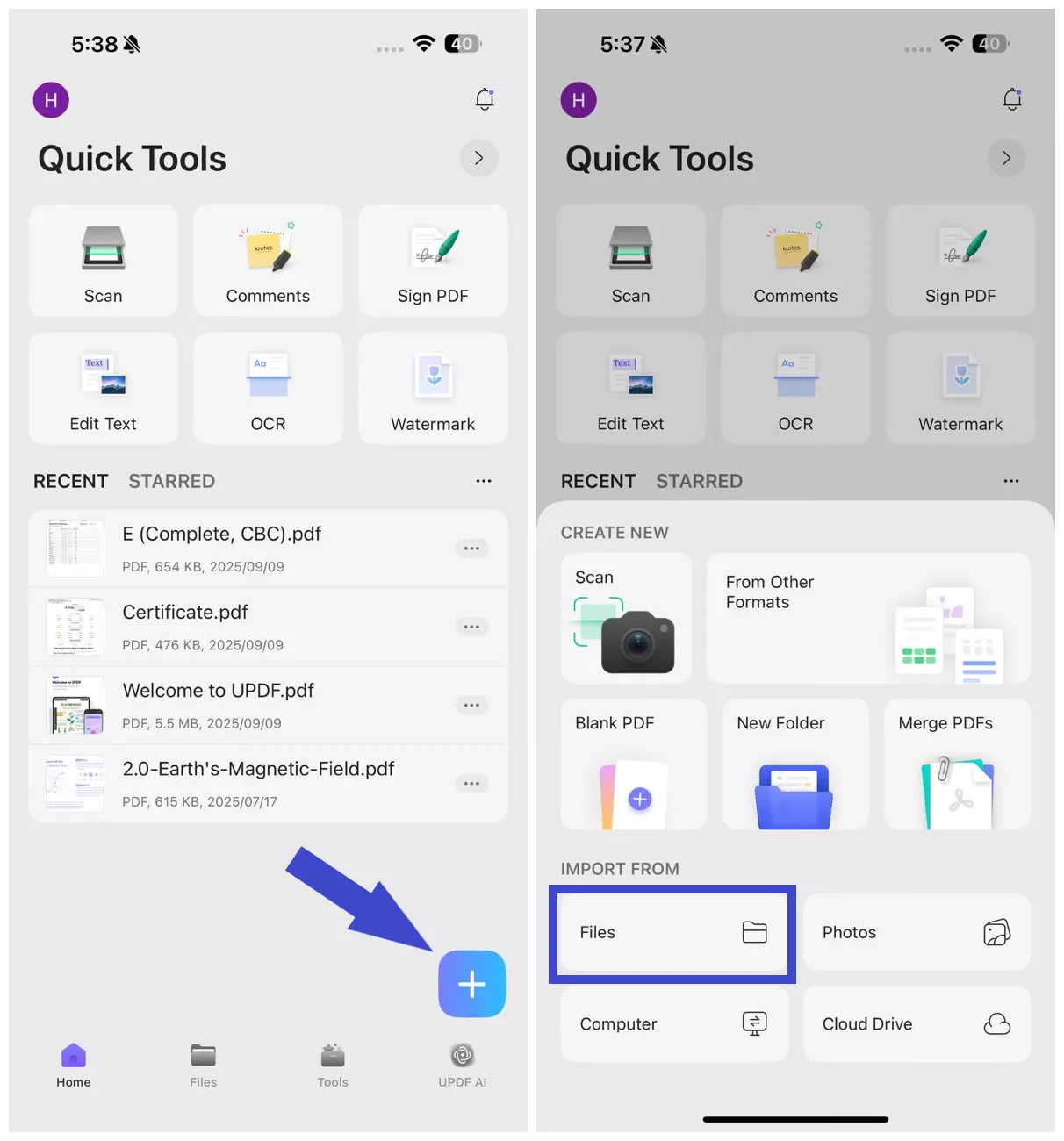
Step 2. Click "OCR" from "Quick Tools" or tap "Tools > OCR".
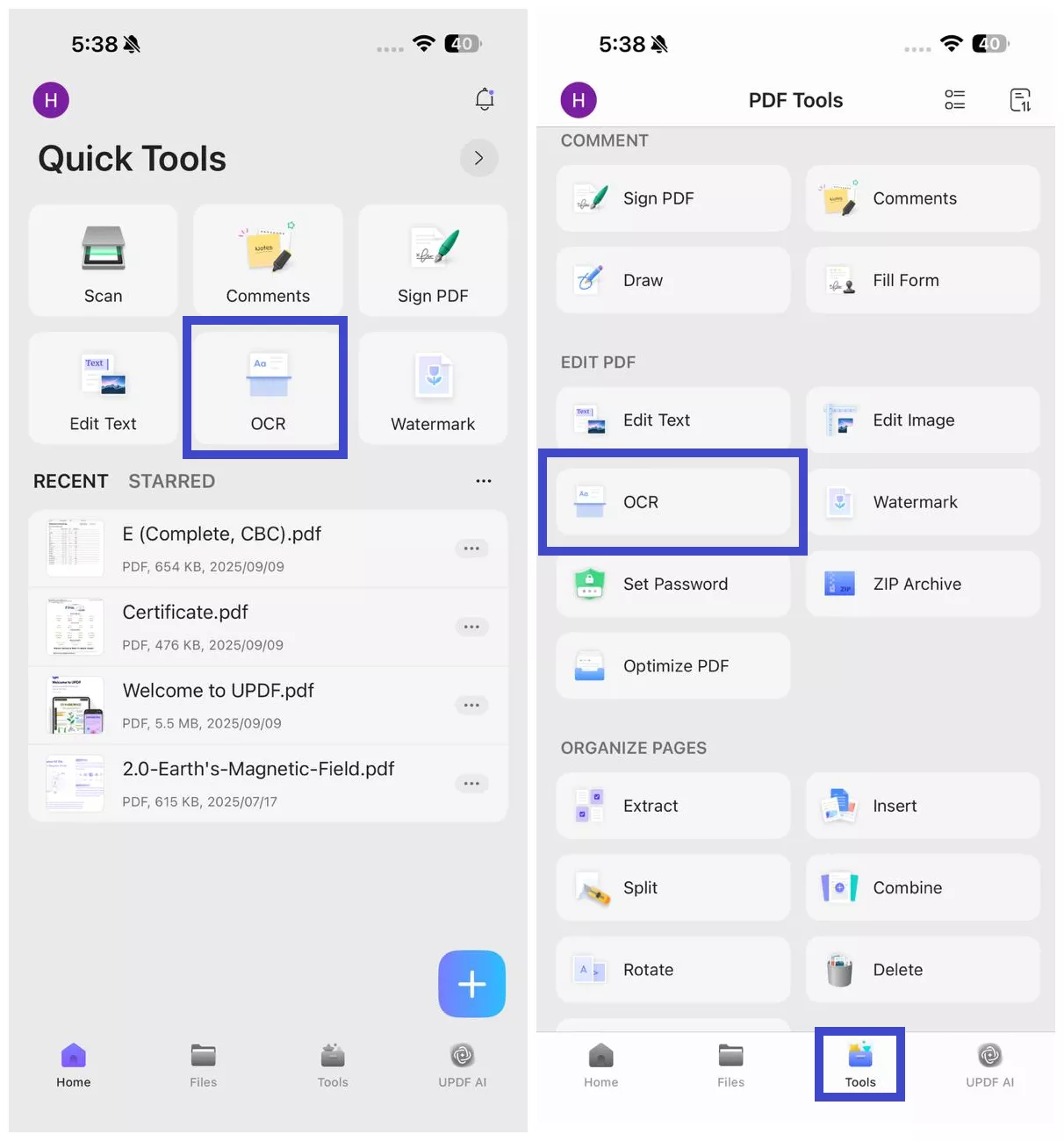
Step 3. Select the scanned PDF file.
Step 4. Under "OCR Recognition Type", choose one of the following options:
- Editable PDF: Turns scans into fully editable PDFs where both text and images can be selected, modified, and moved with preserved original layout. You can even replace images while keeping the page layout intact.
- Text and Pictures Only: Extracts just the words and images from the scan without preserving the page formatting. It is useful when you want a simple file to copy or edit text/images.
- Searchable PDF Only: Keeps the images in the scanned pages as it is, but adds an invisible text layer. It makes the file searchable without allowing text edits.
Step 5. Click "Select PDF Language" and choose the document language. Select multiple languages if the document contains text in more than one language.
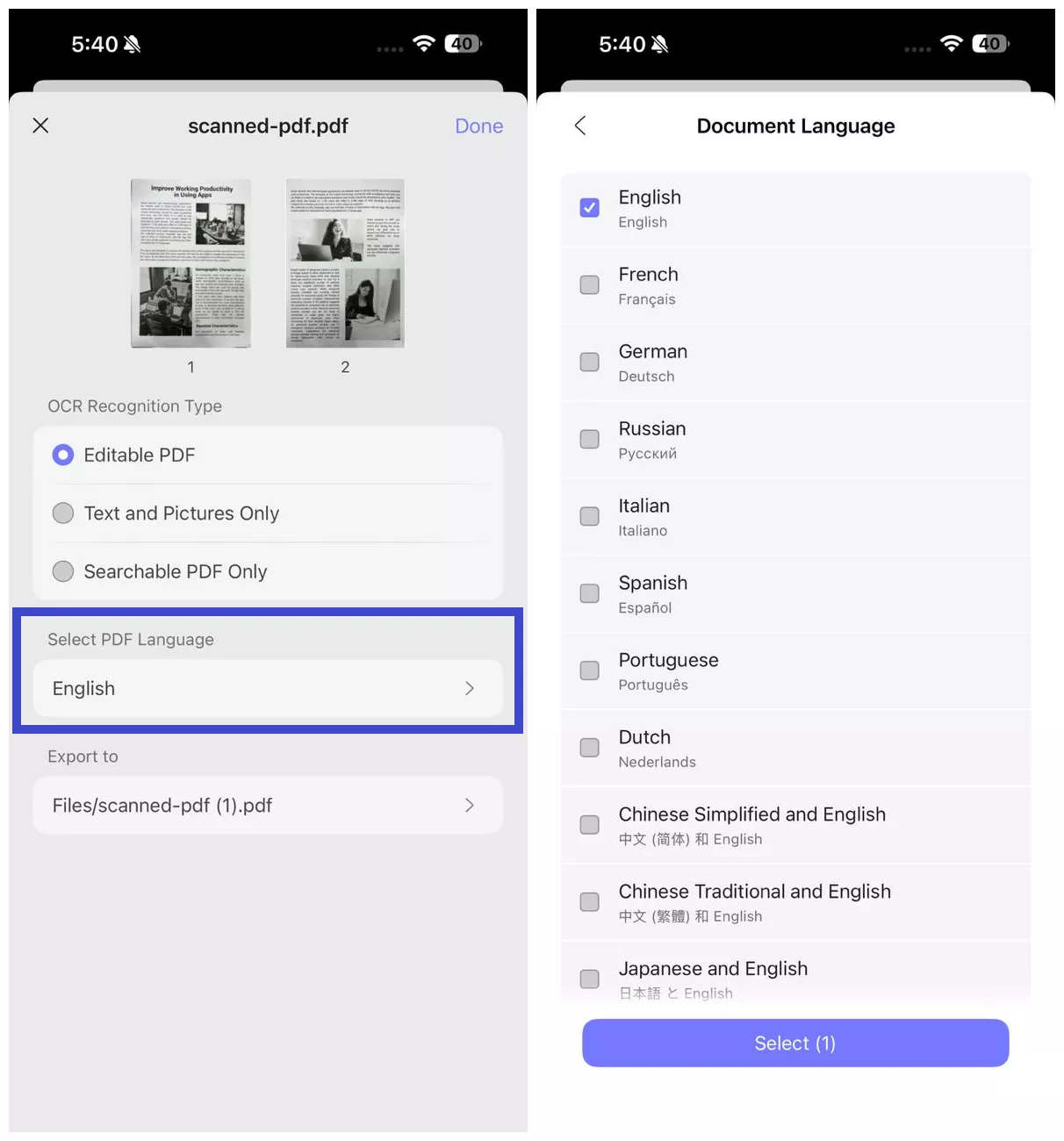
Step 6. Configure the "Export to" location to specify where you want to save the OCRed PDF and hit the "Done" button to begin OCR.
Step 7. Wait for the OCR to finish. Once the OCR is completed, go to the "Files" tab and open the newly-generated OCRed PDF. Now, you can use your finger to select the text you want to translate, and then choose "UPDF AI" from the floating toolbar and select target language to translate it.
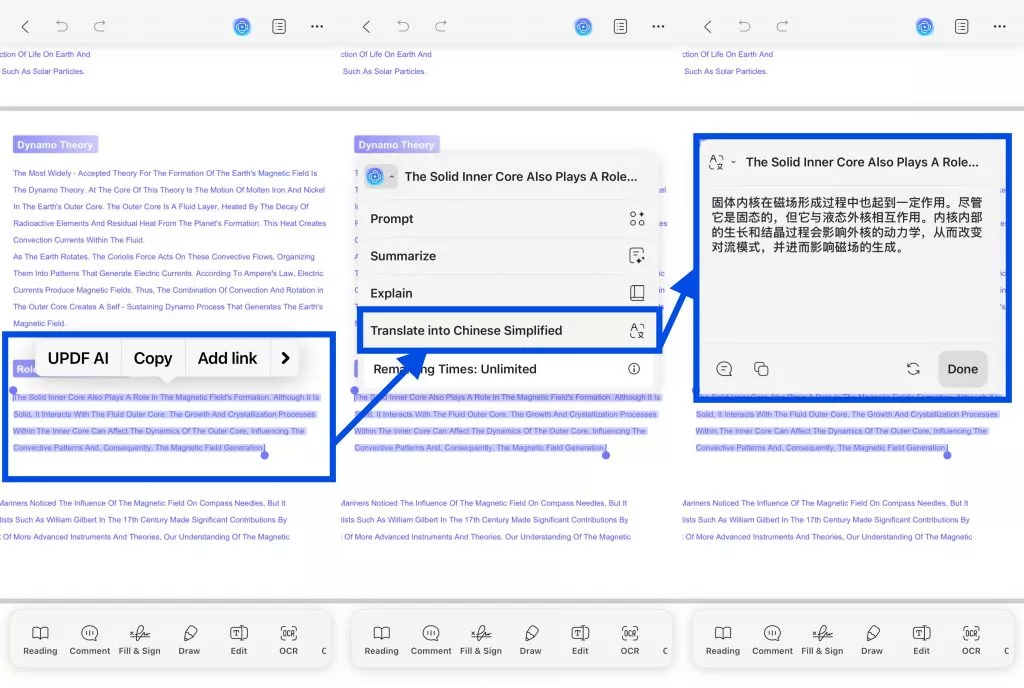
That's how straightforward it is to use UPDF's AI-powered OCR and translator. As the AI assistant of UPDF is also available online, you can access it and translate text on images by clicking the button below.
To learn more about the capabilities of UPDF and its AI, watch this video.
2. Yandex Translate
Yandex Translate is a web-based OCR translator. It allows you to upload images and scanned documents or even directly extract them from a URL. After uploading, you can select from various translation languages. Afterward, it can perform OCR and replace the existing text with the translated one.
The steps to use Yandex Translate are as follows:
Step 1. Go to the Yandex Translate website.
Step 2. Select the translation language and upload the image or scanned document. Make sure the JPG, PNG, GIF, or other formats up to 5 MB in size.
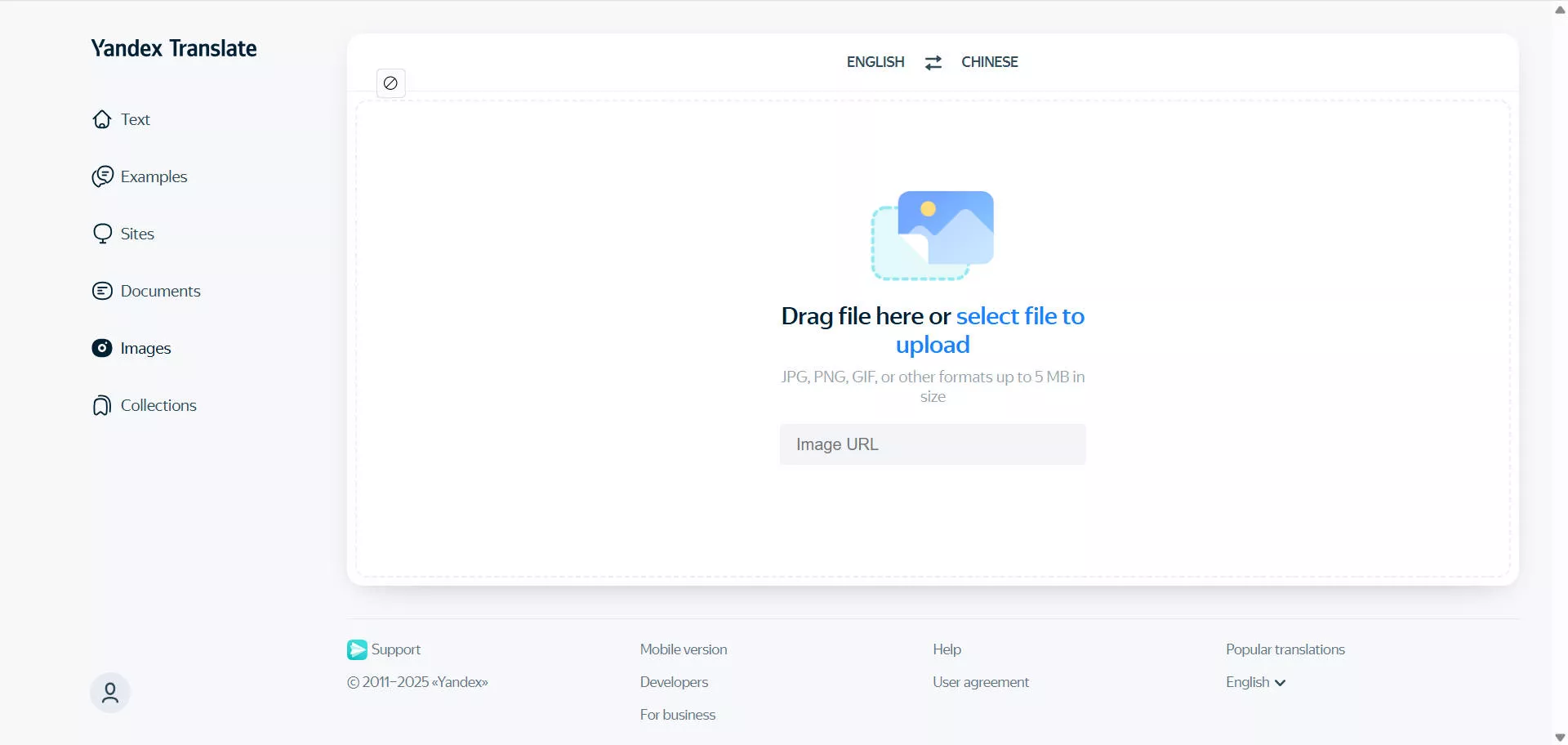
Step 3. The tool will instantly perform OCR and translation. After processing, click the "Download" button to download the translated image/document. If it's the image, you can click "Open as Text" to copy the text.
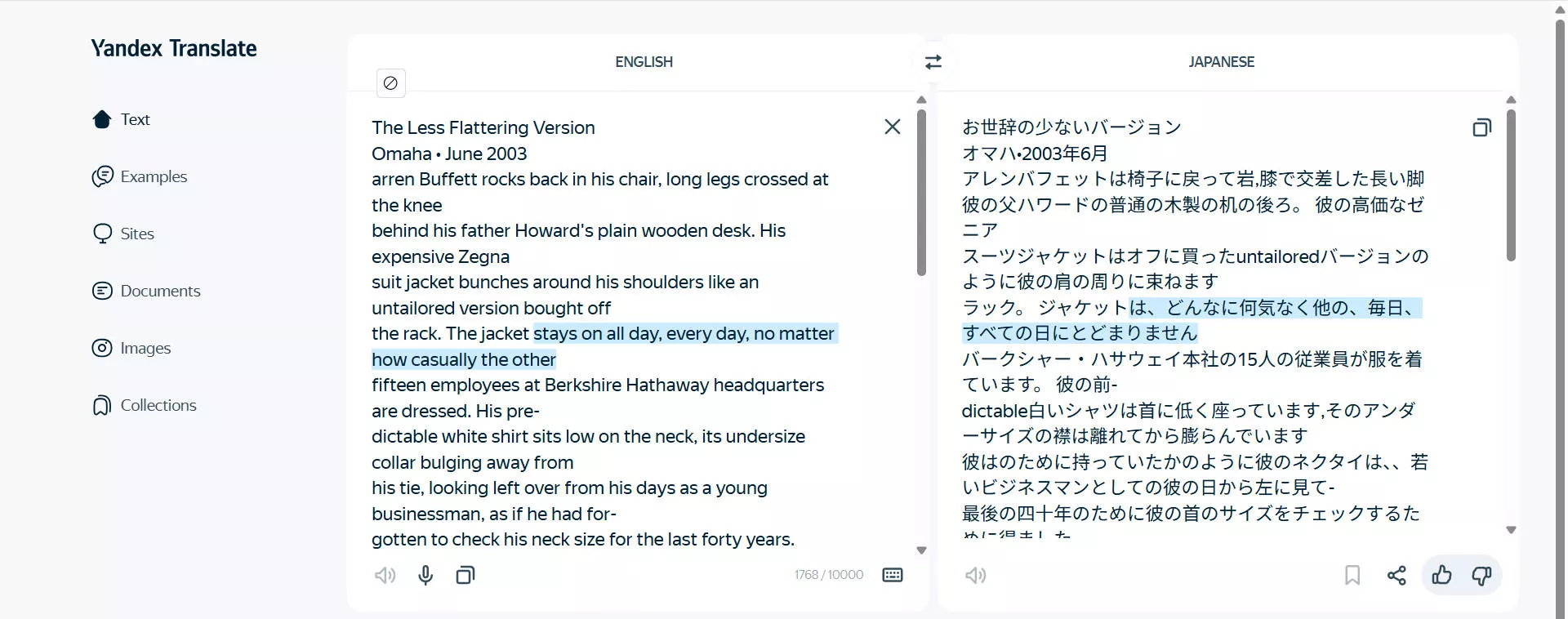
Pros:
- Web-based, intuitive interface
- Fast OCR and translation
- The original layout has been largely maintained
- Can directly insert image URL to perform OCR and translate
- You can view the translated content in pure text format
- The plain text translation can be scrolled through and is presented side by side with the source - language text for comparison
Cons:
- 5 MB file size limit
- May not extract all text from the image/document
- Cannot directly copy the translated text from images
- The plain text translation is limited to 10,000 characters
3. Easy Screen OCR
Easy Screen OCR is another feature-packed OCR tool to scan images and PDFs and translate the extracted text. It supports over 100 languages for OCR. It lets you extract text through desktop (Windows and Mac), web, and smartphones (Android and iPhone). Its desktop version even allows you to capture an instant screenshot of your screen and perform OCR translation right away.
The steps to use Easy Screen OCR are as follows:
Step 1. Install Easy Screen OCR on your computer (Windows/Mac).
Step 2. Right-click the tool's icon from the taskbar to access different options.
Step 3. Click "Preferences" to configure the settings, such as OCR language, translation language, hotkey, etc.

Step 4. Click the "Capture" button to capture a screenshot. Then, click "OCR".
Step 5. Once the text is extracted and translated, copy the text and use it wherever required.

Pros:
- Wide compatibility
- 100+ OCR languages
- Easy-to-use
Cons:
- Require a license to use the tool
- Outdated interface
- Slow processing
- Cannot paste the extracted text directly on the image
4. PixieBrix
The last on our list of OCR translator tools is PixieBrix. It is another web-based tool that can extract text from various image types and lets you use the integrated Google Translate feature to translate the extracted text instantly. It also provides a browser extension for text extraction.
The steps to use PixieBrix are as follows:
Step 1. Go to the PixieBrix website and upload the image. Select the image portion you want to translate.
Step 2. Select the translation language and click "Translate Image".
Step 3. Once the image is translated, copy and use the text.

Also Read: 5 Best Vietnamese OCR Software (Easy and Accurate)
Pros:
- Web-based interface
- Click-based process
- Support a diverse language range
Cons:
- Only support image format
- Slow processing
- Performance issues (may not translate some images)
Part 3. FAQs About OCR Translators
Q1. Does Google Translate use OCR?
Yes, Google Translate includes OCR functionality through Google Lens. When you upload an image through mobile devices or web browsers, it can extract and translate text. However, sometimes the Google Lens might not work.
Q2. Does Windows have built in OCR?
Yes, Windows has built-in OCR capabilities through apps like Word, OneNote, etc. So, you need to use the right app to leverage the OCR in Windows.
Q3. Is OCR text scanner free?
Yes, you can easily find free OCR text scanners. For example, you can use Google Drive for free OCR. Similarly, you can explore and find free OCR text scanners. However, keep in mind that free scanners have limited features compared to paid ones.
Conclusion
OCR translator is a useful tool for quickly extracting and translating text from images or scanned documents. In this guide, we have uncovered four OCR translators you can consider. Each tool has unique strengths and weaknesses. So, choose the one that aligns with your needs.
Among all, UPDF seems the best tool due to its highly accurate AI-backed OCR and translation along with access to other top-notch features. So, why not download UPDF and have the best AI OCR translator at your disposal.
Windows • macOS • iOS • Android 100% secure
 UPDF
UPDF
 UPDF for Windows
UPDF for Windows UPDF for Mac
UPDF for Mac UPDF for iPhone/iPad
UPDF for iPhone/iPad UPDF for Android
UPDF for Android UPDF AI Online
UPDF AI Online UPDF Sign
UPDF Sign Edit PDF
Edit PDF Annotate PDF
Annotate PDF Create PDF
Create PDF PDF Form
PDF Form Edit links
Edit links Convert PDF
Convert PDF OCR
OCR PDF to Word
PDF to Word PDF to Image
PDF to Image PDF to Excel
PDF to Excel Organize PDF
Organize PDF Merge PDF
Merge PDF Split PDF
Split PDF Crop PDF
Crop PDF Rotate PDF
Rotate PDF Protect PDF
Protect PDF Sign PDF
Sign PDF Redact PDF
Redact PDF Sanitize PDF
Sanitize PDF Remove Security
Remove Security Read PDF
Read PDF UPDF Cloud
UPDF Cloud Compress PDF
Compress PDF Print PDF
Print PDF Batch Process
Batch Process About UPDF AI
About UPDF AI UPDF AI Solutions
UPDF AI Solutions AI User Guide
AI User Guide FAQ about UPDF AI
FAQ about UPDF AI Summarize PDF
Summarize PDF Translate PDF
Translate PDF Chat with PDF
Chat with PDF Chat with AI
Chat with AI Chat with image
Chat with image PDF to Mind Map
PDF to Mind Map Explain PDF
Explain PDF Scholar Research
Scholar Research Paper Search
Paper Search AI Proofreader
AI Proofreader AI Writer
AI Writer AI Homework Helper
AI Homework Helper AI Quiz Generator
AI Quiz Generator AI Math Solver
AI Math Solver PDF to Word
PDF to Word PDF to Excel
PDF to Excel PDF to PowerPoint
PDF to PowerPoint User Guide
User Guide UPDF Tricks
UPDF Tricks FAQs
FAQs UPDF Reviews
UPDF Reviews Download Center
Download Center Blog
Blog Newsroom
Newsroom Tech Spec
Tech Spec Updates
Updates UPDF vs. Adobe Acrobat
UPDF vs. Adobe Acrobat UPDF vs. Foxit
UPDF vs. Foxit UPDF vs. PDF Expert
UPDF vs. PDF Expert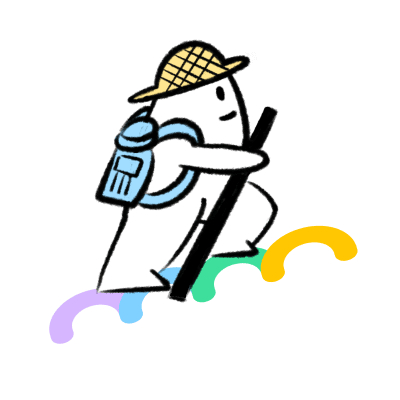

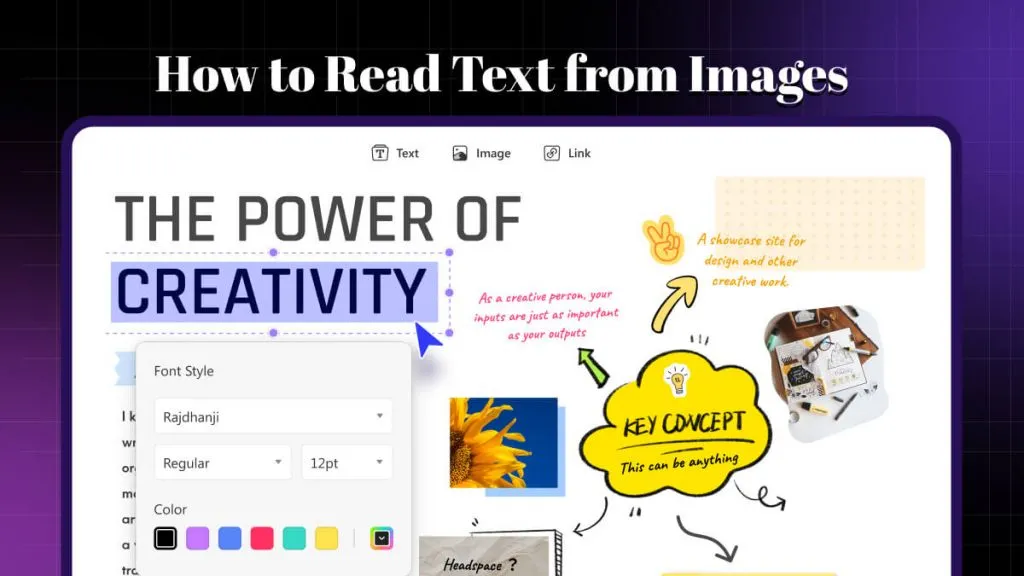



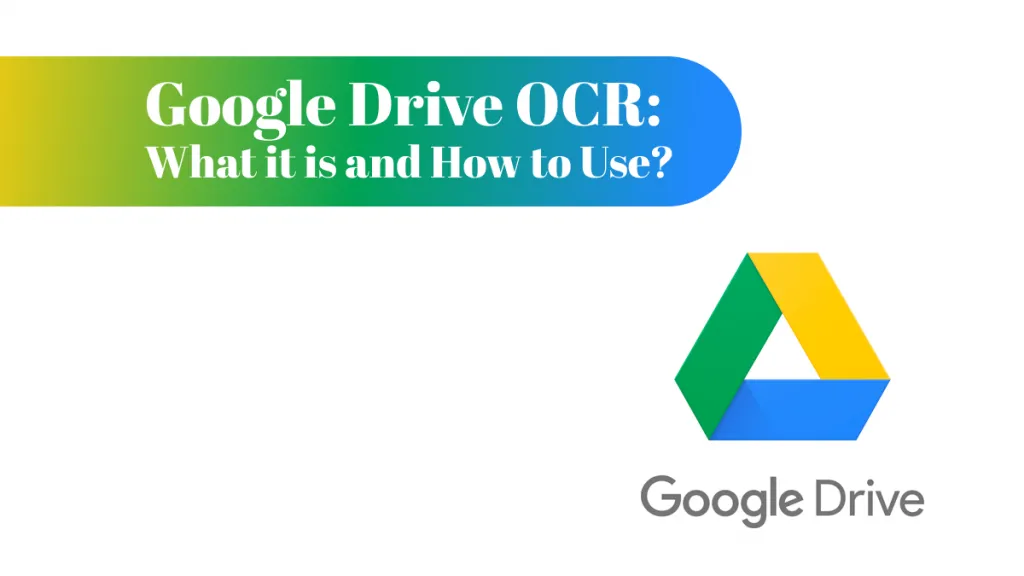
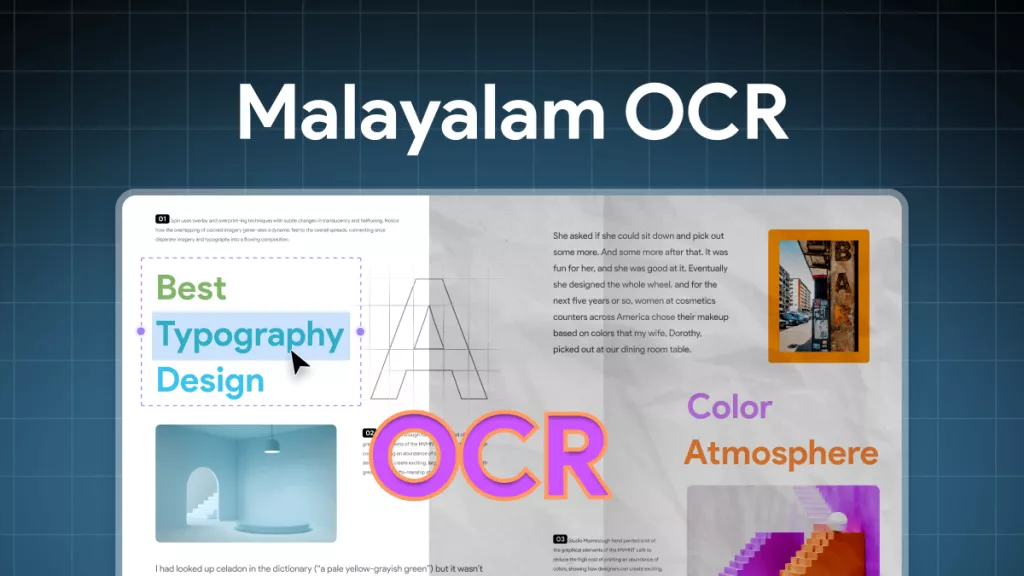
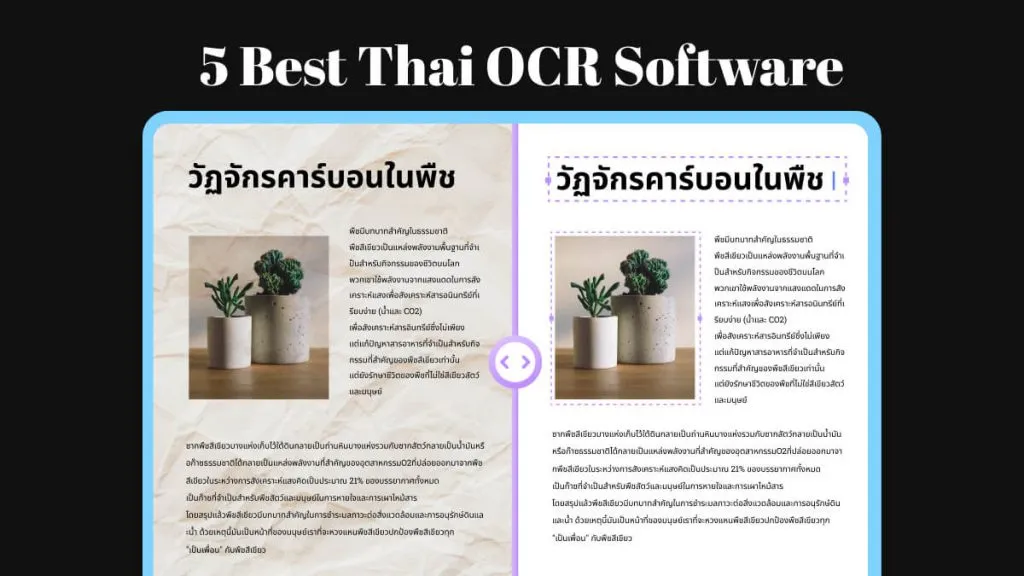
 Enya Moore
Enya Moore 
 Enola Miller
Enola Miller 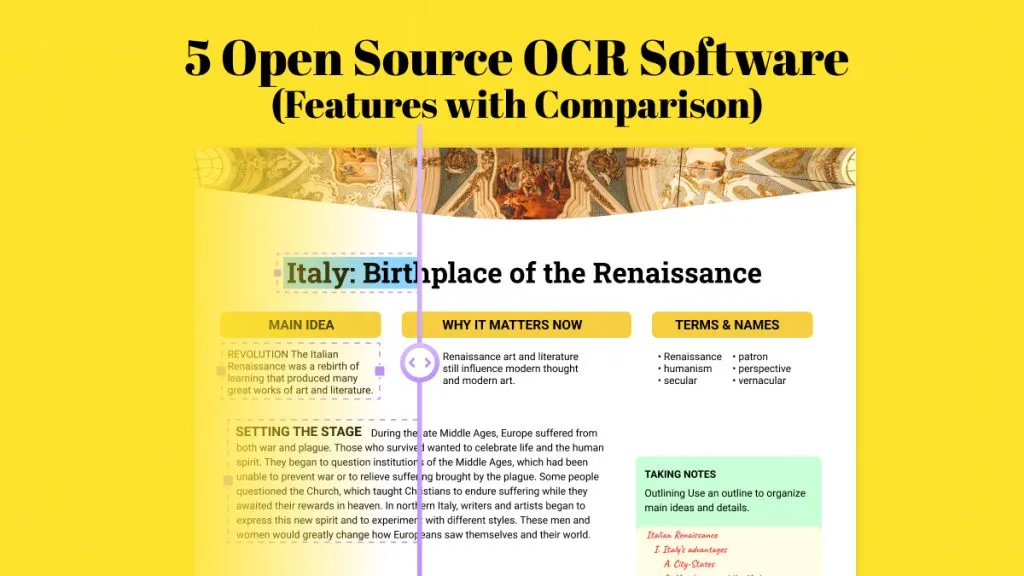
 Enola Davis
Enola Davis 
 Grace Curry
Grace Curry 